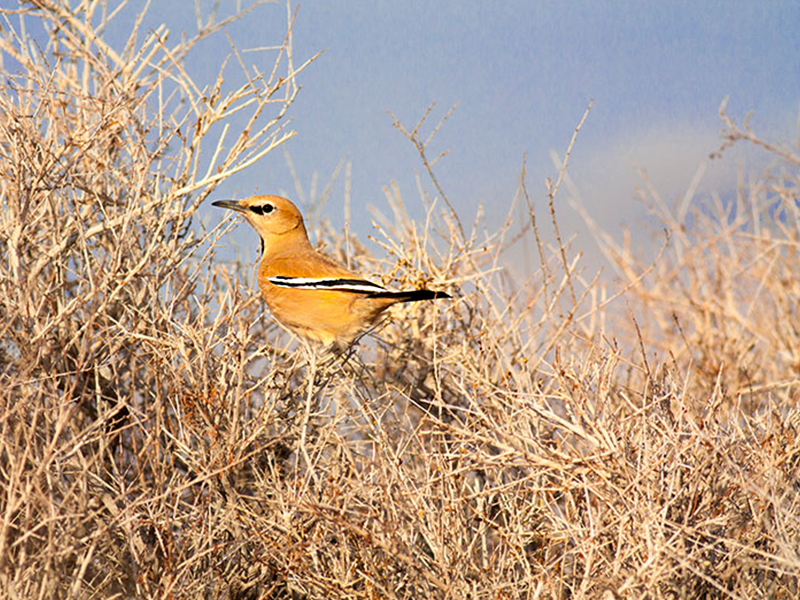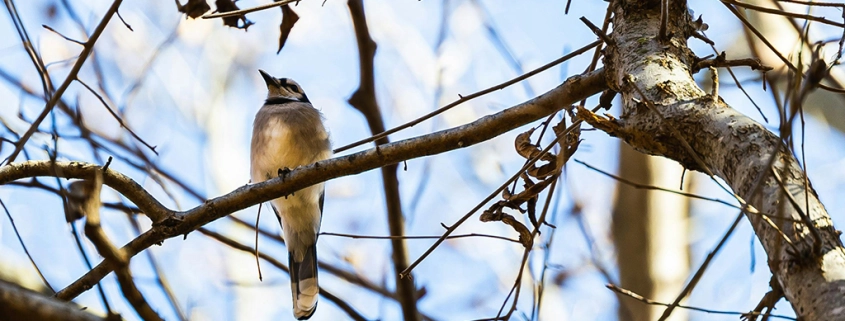Iranian Ground Jay: Photos, Location, Weight, Sound
Because of its diverse topography and climate, Iran is home to various plant and animal species. There are about 8,000 plant species in the nation, including rare and indigenous kinds. Large tracts of forest sustain a variety of plant life, including pistachio, oak, and walnut trees. With more than 500 different types of birds, including the magnificent Iranian cheetah, which is critically endangered and unique to Iran, the country’s animal world is similarly astounding. Other noteworthy wildlife is Pleske’s or Iranian ground jay, also called Zagh-e-Boor.
Persian Ground Jay
Only found in Iran, the Persian ground jay (Podoces pleskei) is a distinctive and fascinating bird species. Its remarkable activity and looks have made it a representative of Iran’s rich bird life. Its most recognizable features are the unique black and white plumage, crested head, and long tail of the Persian ground jay.
It favors dry, rocky environments where it forages on the ground for small reptiles, insects, and seeds. The captivating behavior of the Persian ground jay, which frequently exhibits curiosity and intelligence, is well-known.
The vocalizations of the Persian ground jay are well-known, encompassing a variety of cries and melodic notes. It defends its area and communicates within its social group using these vocalizations.
The Iranian ground jay is a unique-looking, medium-sized bird. It is around 30 centimeters (12 inches) long with a sturdy body.
Iranian Ground Jay Sound
The mesmerizing Iranian ground jay adds a soul-stirring melody to the country’s parched surroundings. The sound of this majestic bird’s melodic calls fills the air as the first rays of sunlight touch the huge expanse of golden desert.
Its voice, a tapestry of complex notes, reverberates through the desolate dunes, creating a mesmerizing song. Like a brushstroke on a canvas, each tone creates a distinct image of the parched landscape.
The song of the jay captures the essence of the desert, its wild spirit, and its unadulterated beauty. You will be taken to a place where time has stopped when you close your eyes and listen.
The call of the Iranian ground jay starts with a soft trill, like the sound of a breeze whispering through the secrets of the desert. It bears the weight of old stories and echoes the knowledge of earlier generations.
Endemic Bird of Iran
Iran’s rich cultural and historical legacy has a special place for the Iranian Ground Jay (Podoces pleskei). The Iranian Ground Jay is frequently linked to stories of adaptability and resiliency in Iranian folklore despite its cultural significance not being as well-known as that of some other famous animals.
Its capacity to flourish in hostile desert conditions is a symbol of the Iranian people’s tenacity and fortitude in the face of hardship. One can take inspiration from the bird’s perseverance in locating food and water in arid environments to overcome obstacles and make the most of scarce resources.

The Iranian Ground Jay’s historical significance is further evidenced by its inclusion in the nation’s folklore and cultural traditions.
Iran’s history dates back thousands of years, and the bird’s presence in the area serves as a reminder of the deep ties that have long existed between the people who live there and the land. It represents the nation’s distinctive biodiversity and the necessity of preserving and safeguarding its natural assets.
Persian Ground Jay Baby
The bird known as the Iranian Ground Jay has unique morphological traits. When they are young, their wings are striped in black and white, and their coloring is brown. They feature sleek, pointed beaks, glossy, beady eyes, and stick-like legs that help with balance.
They have short fur all over their body that gives them a fluffy appearance. The Iranian Ground Jay’s attractiveness and aesthetic appeal are enhanced by these distinctive qualities.
Usually, Iranian Ground Jays breed around April and June. They build cup-shaped nests, frequently concealed in low-lying shrubs or vegetation, out of twigs, grass, and other plant materials.
The female incubates a clutch of three to five eggs for eighteen to twenty days. The hatchlings are being cared for by both parents. They alternate in providing the nestlings with food and egg incubation.
Following hatching, the parents feed their young by spitting forth food, which includes seeds, insects, and other invertebrates. Although the longevity of Iranian Ground Jays in the wild is unknown, similar species of the genus Podoces are known to live for five to eight years. A child usually reaches sexual maturity at the age of one year.
Persian Ground Jay Weight
The average weight of an adult Iranian Ground Jay (Podoces pleskei) is approximately 70 to 80 grams (2.5 to 2.8 ounces).
Where Can Persian Ground Jay be Found?
Podoces pleskei, the Iranian Ground Jay, is endemic to Iran, which means it can only be found inside its boundaries. The Iranian Ground Jay is distributed throughout the country, although it is more common in the semi-arid and dry regions of the east and central regions.

This covers hilly regions like the Zagros Mountains as well as desert areas like the Kavir desert and Lut desert. Because of their excellent adaptations, these birds can thrive in arid desert conditions, where they nest among low vegetation or shrubs and graze on the ground for insects and seeds.
Semnan Province, Isfahan Province, Tehran Province, Yazd Province, Khorasan Razavi Province, South Khorasan Province, Kerman Province, Fars Province, Sistan-Baluchestan Province, and Golestan Province are other locations where Persian Ground Jay can be found.
Threats to Persian Ground Jay
There are many hazards to the Persian Ground Jay (Podoces pleskei) in its natural habitat in Iran. The species is seriously at risk from habitat loss and degradation brought on by infrastructural development, urbanization, and agriculture.
Its dependence on desert environments is disrupted by climate change and changing precipitation patterns, which has an impact on the availability of food and water. Its habitat is further deteriorated by overgrazing, desertification, and poor land management techniques.
The behavior and nesting activities of birds are disrupted by human disturbances resulting from tourist and recreational activities. Wild populations are also endangered by the illicit trafficking in and capture of animals for the pet industry.
Campaigns for public awareness, community involvement, protected area creation, and habitat restoration should be the main focuses of conservation initiatives.
Final Words
Iran is a birdwatcher’s dream come true, home to more than 500 different species of birds. Iran’s avian diversity is astounding, ranging from stately raptors like the endangered Imperial Eagle to vibrant migratory birds like the European Bee-eater or Endemic bird of Iran, the Persian Ground Jay.
Iran’s bird population has to be protected for several reasons. By managing insect populations and pollinating plants, a variety of bird species support ecosystems. They also represent the general health of habitats and act as indicators of environmental health.
Are you planning to travel to Iran and looking for an Iran resort? Consider Matinabad Eco-resort.





Leave a Reply
Want to join the discussion?Feel free to contribute!